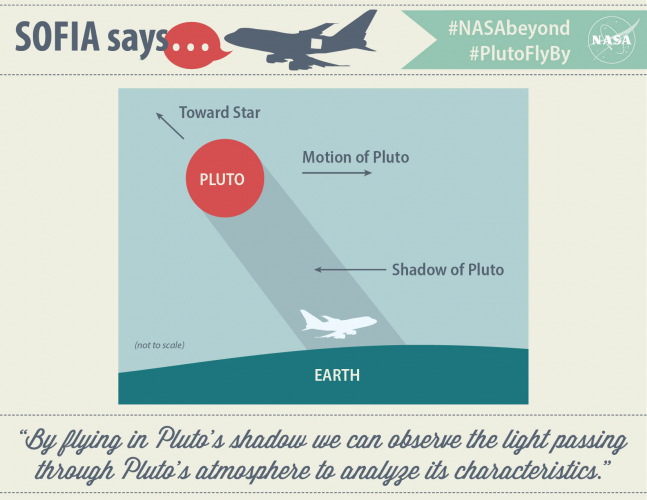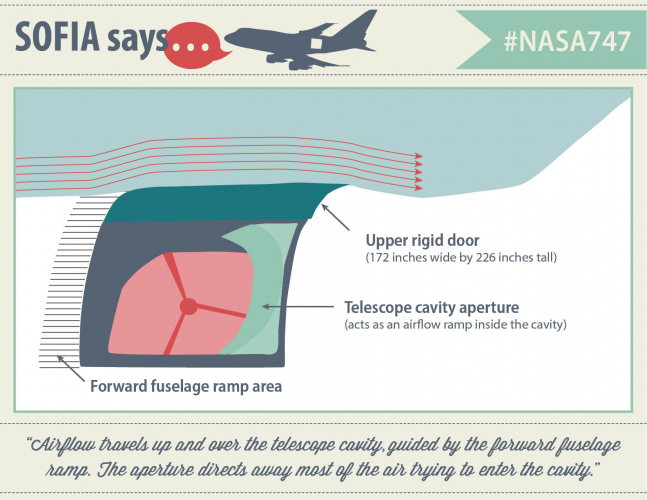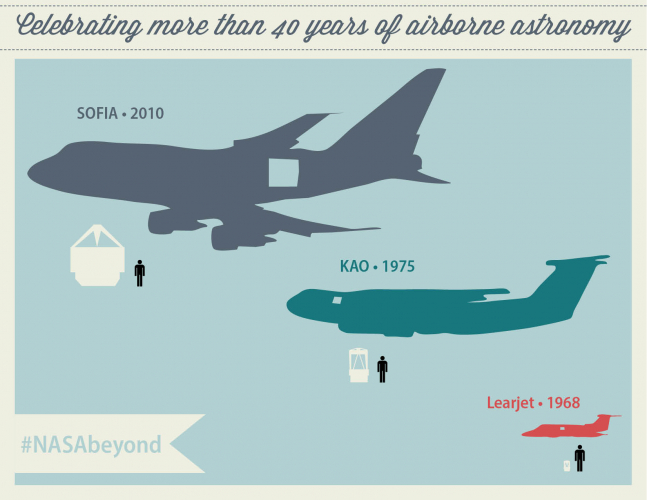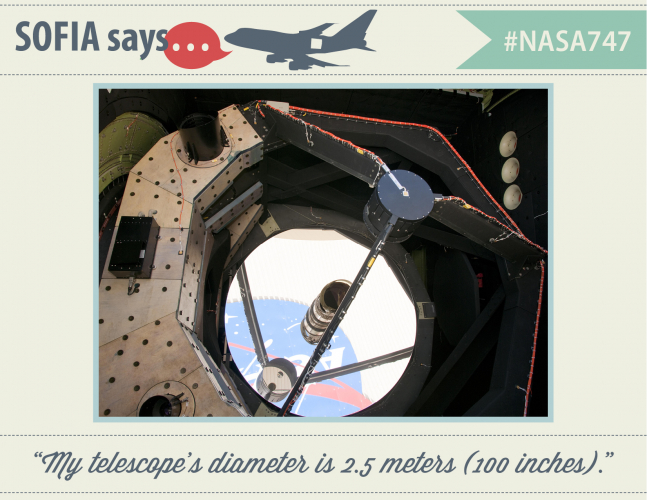Shareables gallery
| Title | Image |
|---|---|
|
SOFIA Observes Pluto Occultation
Caption
SOFIA observed the dwarf planet Pluto as it passed in front of a distant star in June 2015. This event, known as an “occultation,” allowed scientific analysis of Pluto and its atmosphere by flying SOFIA at the right moment to an exact location where Pluto’s shadow crossed Earth.
Credits
(NASA/SOFIA/USRA/ASP/L. Proudfit)
|

|
|
SOFIA Telescope Cavity Airflow
Caption
Turbulent airflow over and inside SOFIA's telescope cavity impacts the quality of the telescope's performance. To limit airflow interaction with the telescope, engineers used NASA supercomputers and wind tunnel testing to develop a solution that minimizes disturbances inside and above the telescope cavity. This solution also incorporates the upper rigid door and its tracks into the design. When looking toward SOFIA's tail, one can see that a ramp was installed ahead of the telescope cavity that directs airflow up and over the forward door track, then over the telescope cavity. Another ramp guides airflow back along the fuselage toward the tail. Some airflow does separate and enter the telescope cavity, however, an airflow ramp was added inside, at the aft end of the cavity, to direct airflow up and out of the cavity. This device is known as the "telescope cavity aperture."
Credits
(NASA/SOFIA/USRA/ASP/L. Proudfit)
|

|
|
Celebrating More than 40 Years of Airborne Astronomy
Caption
SOFIA's predecessor, the Kuiper Airborne Observatory (KAO), was dedicated on May 21, 1975. Carrying a 36 inch telecope, the KAO conducted airborne astronomy until 1995. The KAO succeeded NASA's Lear Jet observatory, which began flying in 1968 with a 12 inch telescope.
Credits
(NASA/SOFIA/USRA/ASP/L. Proudfit)
|

|
|
SOFIA Airborne Telescope Stabilization
Caption
How do you keep a telescope stable while flying at 40,000 feet? First, isolate the telescope from the airplane by mounting it on a spherical pressurized oil bearing. Second, direct the wind away from the telescope by shaping the side of the airplane so as to deflect it. Third, stabilize the telescope against sudden motion by spinning three gyroscopes.
Credits
(NASA/SOFIA/USRA/ASP/L. Proudfit)
|

|
|
SOFIA Airborne Telescope Diameter
Caption
Like most modern research telescopes, the SOFIA telescope uses a mirror to concentrate and focus the incoming light. SOFIA’s telescope is usually referred to as a 2.5-meter meter telescope, rather than 2.7 meters, because the optical design requires that only about 90% of the mirror’s reflecting surface (called the "effective diameter") can be used at any one time. Although SOFIA’s telescope is by far the largest ever to be placed in an aircraft, compared to normal ground-based research observatories it is only medium-sized.
Credits
(NASA/SOFIA/USRA/ASP/L. Proudfit)
|

|